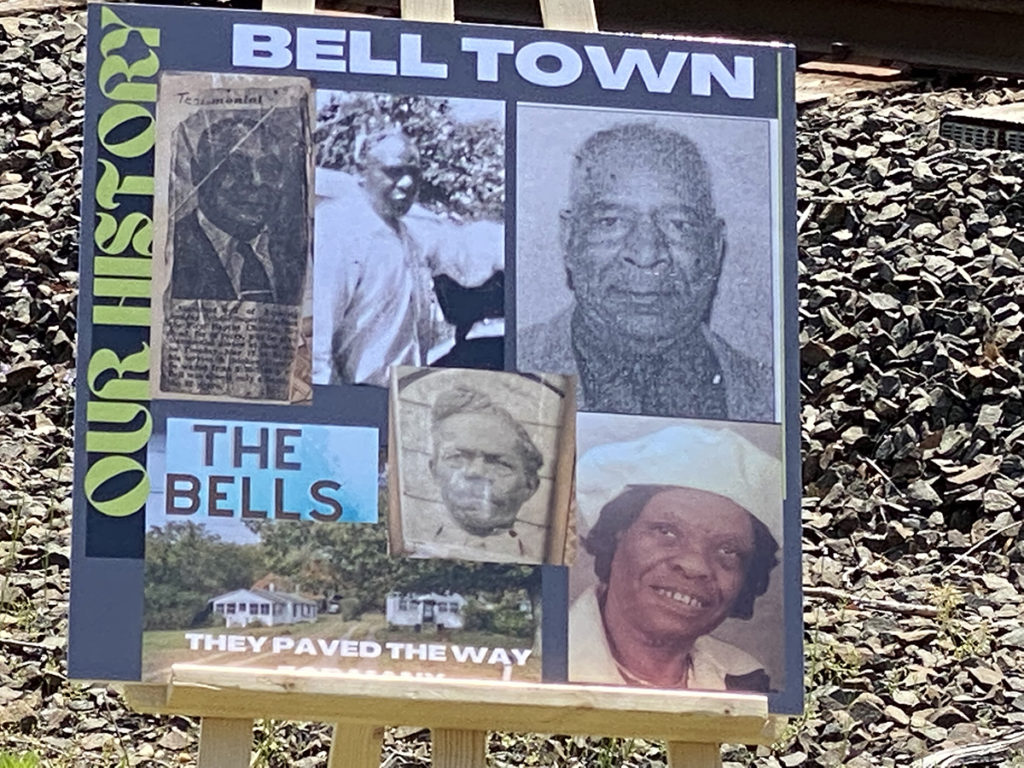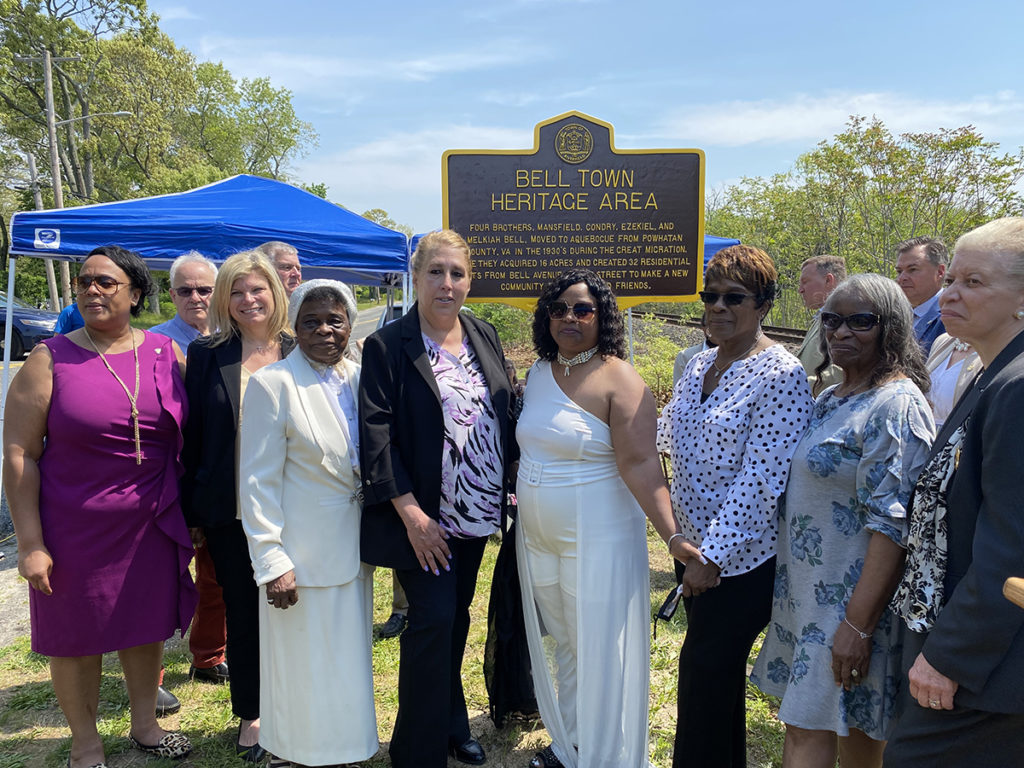Bell Town history recognized in Aquebogue

About 100 people attended the unveiling of a sign Saturday proclaiming “Bell Town” in Aquebogue as a Town Heritage Area, the first of its kind in Riverhead.
Attendees of the event also heard plans for the creation of an African-American and Black Native American cultural center and museum in Riverhead Town.
A cultural heritage area recognizes the cultural history of an community, officials said. In this case, it was work of the four Bell brothers that was being recognized.
In the 1930s, four brothers, the sons of a self-taught Black farmer and the grandsons of slaves hailing from Powhatan County in Virginia, made the move north to Aquebogue to escape the oppression of the South.

They joined millions of Black Americans migrating from the south to the north in search of better lives during the “Great Migration,” which saw about 6 million southern Black residents do likewise between 1916 and 1970.
It was the work of Marylin Banks-Winter of Riverhead, and her mother, Rev. Mary Cooper, descendants of the Bells, who led the push for the designation, which applies to the area north of Hubbard Avenue, between Bell Avenue and Zion Street. The town’s Landmarks Preservation Committee also worked on the designation.
The Town Board approved it in March 2021 and unveiled the sign Saturday, in a ceremony attended by the Town Board, Suffolk County Executive Steve Bellone, Assemblywoman Jodi Giglio, District Attorney Ray Tierney, County Legislators Al Krupski and other local dignitaries.
“This is impressive to see so many people from all walks of life here,” said Supervisor Yvette Aguiar.
The story of Bell Town detailed the settlement in Aquebogue of the former Bell brothers: Mansfield, Condry, Ezekiel and Melkiah Bell.

The Bell brothers worked as farm laborers and baymen and soon acquired about 16 acres of property near the southern end of a Downs family farm in Aquebogue.
That’s where the Bells laid out Bell Avenue, Hobson Drive and Zion Street and created 32 residential lots they sold to family and friends who had also moved north from Virginia.
“Riverhead has not been very good about celebrating its people of color and their history and the important role they played,” said Richard Wines, chairman of the town’s Landmarks Preservation Committee.
“We ignored more than 500 slaves who lived here on the North Fork from the beginning of English settlement up to the end of slavery in New York in 1828,” he said. “Similarly, we pretty much ignored what happened to the indigenous peoples that were here before those English settlements. And we also have ignored the wave of African-American migration that came to the North Fork in the 1920s and 30s. That’s why the landmarks preservation commission was so delighted a couple years ago when Marilyn came into the commission and asked what we could do to celebrate this heritage. “
“We wanted to give you a snapshot of where we would like to go from here,” Ms. Banks-Winter said toward the end of the presentation. “We would like to make an appeal for funding for a building, or a donation of a building, for the creation of an African-American and Black Native American Cultural Center and Museum in the Town of Riverhead … We will highlight the rich history and culture of Native and African American communities and citizens,”
She said they are also collecting money through the non-profit African American Educational Cultural Festival, “which has been telling our stories and curating for 21 years, with displays on exhibit at the Riverhead Free Library.”








